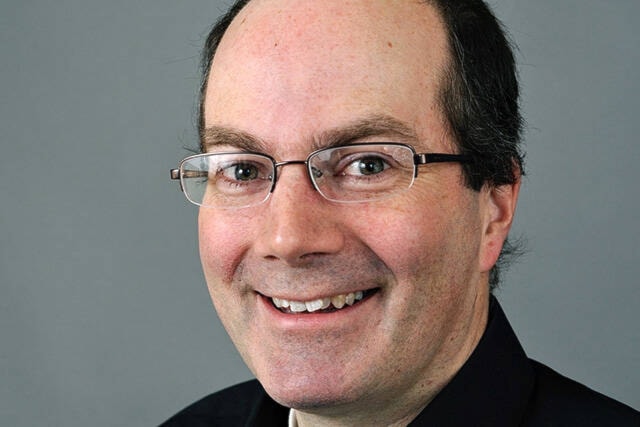It’s that time of year. The eagles migrate to the coast for the season, and the rental diesel generators flock to their winter habitat on the banks of the Yukon River near Schwatka dam.
However, as illustrated by the winter eagles of the Whitehorse dump, poor infrastructure planning can result in diesel generators choosing to spend all year in the Yukon.
With a world of Net Zero carbon emissions on the distant horizon, we have several plans to deal with an infestation of fossil-fuel-gulping diesel generators.
Plan A is to replace the home furnaces and internal combustion engines of our growing population with heat pumps and electric vehicles. This will require us to not just talk about, but actually build, huge amounts of new renewable power. And not just solar panels, but plants that generate in the darkest days of winter when we need heat.
Plan B is biomass, the jargon energy planners use for the age-old habit of burning wood. This would require something that recent news stories suggest is quite difficult for us these days: approving firewood permits in a timely manner. Plus we’ll need rigorously enforced air-quality regulations for big biomass units located near residential areas.
Plan C is biofuels, where we keep the diesel generators but feed them with renewable diesel made from canola or other feedstocks.
Somewhere down the list is Plan N, for nuclear. Plan N involves a new generation of small, modular reactors (SMRs), a concept which Canada and several other countries are pushing in response to climate change. These are designed to be safer and cheaper than big, traditional nuclear power plants. The idea is that units can be built economically in a southern factory, shipped to a northern power plant to be plugged into the grid for a decade or two, and then returned to the factory to be decommissioned safely.
As for the Yukon government, it says it “supports the vision for SMR development… and sees the potential for SMRs to be a source of clean, safe, and affordable energy.” The Yukon’s endorsement of the national SMR program includes references to creating economic opportunities for Yukon First Nations.
The Yukon is coming late to the circumpolar SMR party.
Earlier this year, a Swedish partnership involving the University of Luleå proposed a SMR at Oskarshamn, about as far north as Juneau.
Last year, the Nuclear Energy Working Group at the University of Alaska Fairbanks updated its report on the potential for SMRs in Alaska. One of the reactor technologies they examined is currently working its way through the Canadian approval process in a joint venture between Ontario Power Generation and Ultra Safe Nuclear Corporation.
The report estimated that SMRs in Alaska could generate electricity in the range of 9-13 US cents per kilowatt hour. This is cheaper than electrical rates in many towns in the N.W.T. and Nunavut, although not as cheap as electricity generated by natural gas in Alaska without a carbon tax.
Two months ago, the US Air Force announced it selected Eielson Air Force Base in Fairbanks, home of two F-35A fighter jet combat squadrons, to be the test site for its first micro reactor. The base currently has its own coal power plant, burning up to 800 tonnes of coal a day. The reactor will generate one to five megawatts of electricity to reduce this coal burn.
This would be the first nuclear reactor in Alaska since an early unit at Fort Greeley closed in 1972.
The Russians have pushed the concept the farthest. A floating SMR began generating power last year in Pevek, a coastal town in the Chukotka region of Siberia about the same distance from Old Crow as Vancouver. The plant is about 70 megawatts in capacity, or roughly half the size of the Yukon’s power generating capacity. The Russians are building long-distance transmission lines to hook up other communities in Chukotka..
The reactor’s cooling system also generates enough heat to provide copious amounts of hot water for the town. The community sauna will soon be heated with nuclear-generated steam.
A visiting New York Times correspondent recently visited to ask residents how they felt about showering in atomically warmed hot water. The floating SMR’s deputy director called it a “positive ecological moment” and pointed out that there was less coal soot on the snow. A librarian said she liked the plentiful heat and electricity but, as for nuclear accidents, “We try not to think about it, honestly.”
Russia developed a new reactor model for its new Arktika class of icebreakers, and plans to use a version of this for additional SMRs in the Chukotka region. One possibility is to power a massive new Arctic copper mine with floating reactors instead of liquefied natural gas.
Russia’s nuclear plans in the North have received mixed reviews. They reduce carbon emissions, which is helpful in the fight against global warming, but the risks of nuclear power still alarm many observers.
That debate may come to the Yukon some day, especially if we don’t get around to decisive action on Plans A to M. Picture Yukon decision makers in the 2030s if the population has grown to 50,000 people, we haven’t built abundant renewable power, national carbon regulations are tightening, and there is a big proposed mine that would create a lot of jobs. The pressure to approve Plan N at that point could be unstoppable.
Keith Halliday is a Yukon economist, author of the Aurore of the Yukon youth adventure novels and co-host of the Klondike Gold Rush History podcast. He is a Ma Murray award-winner for best columnist.
